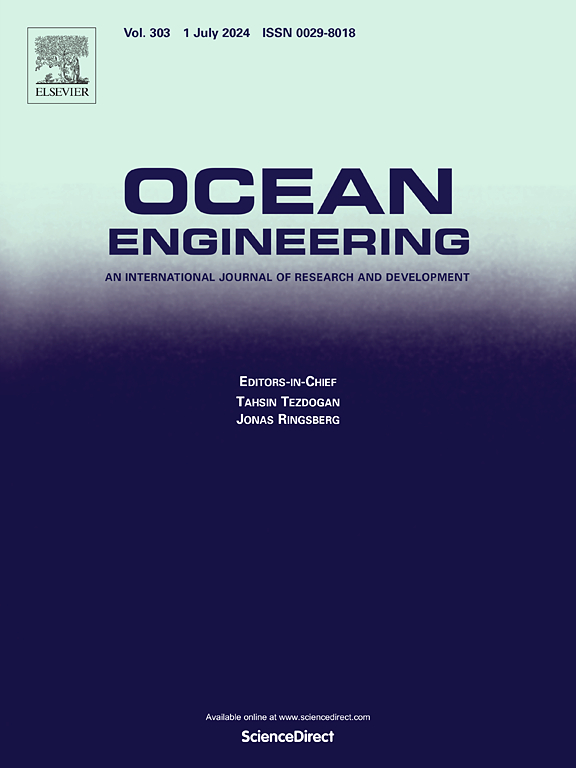Three-dimensional VIV characteristics of the top-tensioned riser considering platform motion and pipe-soil coupling
IF 4.6
2区 工程技术
Q1 ENGINEERING, CIVIL
引用次数: 0
Abstract
The upper and lower boundaries of the riser are often oversimplified as clamped constraints in prior analyses of vortex-induced vibration (VIV), leading to the inaccurate predictions in the VIV responses. A three-dimensional VIV model of the top-tensioned riser is established considering the platform motion and the nonlinear pipe-soil interaction. The VIV hydrodynamic force is calculated by the Van der Pol wake oscillator, while the nonlinear soil resistance is obtained with the p-y curve method. A novel VIV analysis approach for the riser with upper and lower boundary disturbances is proposed based on Newmark-β method and fourth-order Runge-Kutta method. The availability of the methodology is corroborated by multiple cases. The effects of the platform motions and the pipe-soil coupling on the VIV characteristics of the riser are studied. The results show that high-amplitude surge and sway motions cause a deviation of the vibration attitude of the riser from the standard mode shape. The heave motion exerts minimal influence on the VIV characteristics because the majority of the axial displacement of the riser is compensated by the tensioners. The VIV amplitude at the bottom of the riser is heightened, with a slight reduction in VIV frequency attributed to the pipe-soil coupling.
考虑平台运动和管道-土壤耦合的顶张式立管三维 VIV 特性
在之前的涡流诱导振动(VIV)分析中,隔水管的上下边界往往被过度简化为夹紧约束,导致对 VIV 响应的预测不准确。考虑到平台运动和非线性管土相互作用,建立了顶张立管的三维 VIV 模型。VIV 流体动力通过 Van der Pol 唤醒振荡器计算,而非线性土壤阻力则通过 p-y 曲线法获得。在 Newmark-β 方法和四阶 Runge-Kutta 方法的基础上,提出了一种新的上下界扰动立管 VIV 分析方法。多个案例证实了该方法的可用性。研究了平台运动和管土耦合对立管 VIV 特性的影响。结果表明,高振幅的涌浪和摇摆运动会导致立管的振动姿态偏离标准模态。由于立管的大部分轴向位移都由张紧器补偿,因此倾斜运动对 VIV 特性的影响微乎其微。立管底部的 VIV 振幅增大,VIV 频率略有降低,原因是管道与土壤耦合。
本文章由计算机程序翻译,如有差异,请以英文原文为准。
求助全文
约1分钟内获得全文
求助全文
来源期刊

Ocean Engineering
工程技术-工程:大洋
CiteScore
7.30
自引率
34.00%
发文量
2379
审稿时长
8.1 months
期刊介绍:
Ocean Engineering provides a medium for the publication of original research and development work in the field of ocean engineering. Ocean Engineering seeks papers in the following topics.
 求助内容:
求助内容: 应助结果提醒方式:
应助结果提醒方式:


